Bhutan is a Kingdom that is tucked away in the Himalayas. It is a gorgeous country with eye-popping mountain ranges, fertile jungles, and friendly locals. Bhutan is also world-famous for its festivals, hiking trails, spicy food, and archery fields. You will have to do some legwork to get ready for your travels, such as getting your shots, acquiring a visa, and finding a tour company. Though there are limited ways to enter Bhutan and it’s a bit tricky to get to, it is well worth it for the memories you’ll create!
StepsPart 1Part 1 of 3:Gearing Up for Your Trip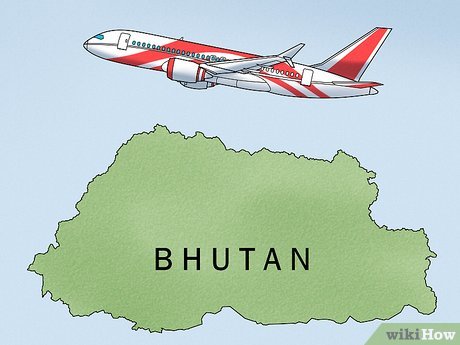
1Travel during the spring or fall for the best experience. Most tourists visit Bhutan in the spring or fall months. March, April, October and November are particularly busy because these are the best times to experience local festivals and go trekking. If you would like to travel to Bhutan during one of these periods, book your trip at least 3 months in advance.XThe spring and fall months have the best weather for hiking. It is a little colder than other months, but the skies are usually clear and the ground is not muddy.Monsoon season in Bhutan lasts from July to August. During this time, a few hours of light rain in the mornings is typical.If you are on a tighter budget, it is significantly cheaper to travel during the off-peak months. It costs about 250 dollars per day to visit Bhutan during the tourist seasons and around 200 dollars per day in the other months.
2Connect with a tour company in Bhutan. One of the restrictions for most people who want to visit Bhutan is that they cannot explore the country independently. People with an Indian, Bangladeshi or Maldivian passport don’t have to worry about this, but everyone else must hire a tour company.XOnce you get to Bhutan, you need a tour guide to travel between cities. There are checkpoints between regions that verify your visas and your tour guide’s documents.You can roam within a city on your own. You can also hike the surrounding trails by yourself as long as you don’t hike from one city to another.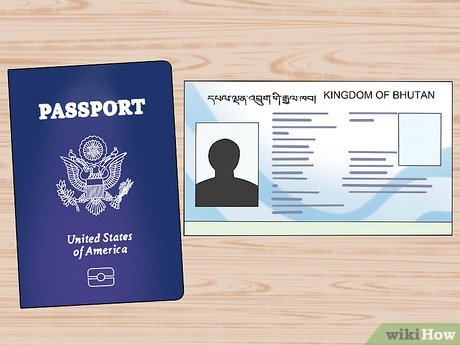
3Obtain a visa through your tour company. Unless you have an Indian, Bangladeshi or Maldivian passport, you must get a visa to travel to Bhutan. Send a scanned document with your passport photo on it to your tour company. They will apply for your visa, which gets processed by Bhutan’s tourism council. You will have to wire money, which includes a visa fee and full payment for your trip, to the tourism council. The council will then send you a visa clearance letter. When you arrive in Bhutan and show them this document, you’ll get your visa stamped onto your passport.XEvery individual travelling needs their own visa.The visa fee is 40 dollars. The daily cost of the visa comes out to about 250 dollars during tourism season or around 200 dollars for off-peak months. While this may seem expensive, keep in mind that the daily fee pays for just about everything. This includes lodging, private transportation, guide fees and meals.Once the tourism council receives all of your documents and payments, it will take about 3 days to process this information.
4Note the surcharges for groups of two or fewer people. Traveling to Bhutan by yourself or with just one other person means you’ll have to pay a daily surcharge. For people visiting on their own, the fee is 40 dollars per day. If you are travelling as a pair, the surcharge is 30 dollars per day.XThere are no surcharges for groups of three or more, so gather up your friends and bring them along. The more the merrier!
5Get all your shots well in advance of leaving. All travelers must be up-to-date on routine vaccinations. These include the MMR (measles-mumps-rubella) vaccine, the chickenpox vaccine, the polio vaccine, and your yearly flu shot. It is recommended you get shots for hepatitis A and typhoid, as these are found in contaminated food and water in Bhutan.XOther suggestions for shots include malaria, rabies and yellow fever. Mosquitos carry malaria, while dogs, bats, and other mammals in Bhutan have rabies. If you are going to spend a lot of time outside, it is smart to get these two shots.There is no risk of yellow fever in Bhutan. The government requires proof of a yellow fever vaccination only if you are coming from a country with risk of the disease. The United States is not included on this list.
6Bring clothing that covers your body. Fortresses and monasteries are some of the most popular tourist attractions in Bhutan. To enter these places, you will need to dress properly. This means wearing long pants, long-sleeved shirts, and closed shoes. Jeans are acceptable. You cannot wear any caps or hats while inside the monastery.XIf you have a jacket, you must wear it fully buttoned or zipped. You are not supposed to wear it around your waist. Bringing a jacket is important, because it can get cold up in the mountains at any time of year.If you are traveling during the summer, when it is relatively hot, pack pants and a long-sleeved shirt before you go on a day trip. That way, you can spend most of the day wearing shorts and a shirt and just slip on the heavier clothes right before you go into a monastery.If you’re visiting Bhutan between November and March, pack multiple long-sleeve shirts and pants. Though you may not need them, take gloves and a hat just in case.
7Carry some cash for personal expenses. This will go mostly to souvenirs, tips, and drinks that aren’t water or tea. Since the tour package is entirely prepaid, you will only need to carry around 200 dollars in cash for the whole trip.XThere are ATMs in Bhutan, but only in the biggest towns. They do not always work and the ones that do might only let you take out a small amount of money.Most hotels and big stores will allow you to pay using a credit or debit card.Part 2Part 2 of 3:Making the Journey to Bhutan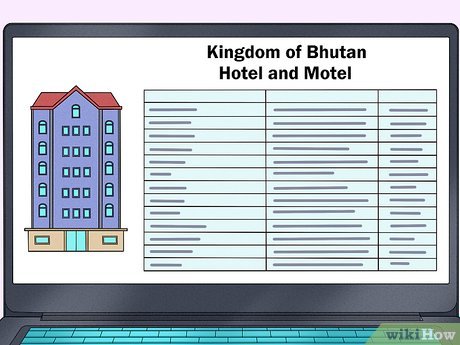
1Pick out a hotel that fits your price range. The standard visa fee includes 50 dollars a night for staying at a three-star hotel. If you want to stay in a four or five-star hotel, you’ll need to pay the daily difference. For example, if it costs 400 dollars a night to stay at a five-star hotel, you subtract 50 dollars from the visa and pay 350 dollars per night out of pocket.XThe average extra cost for a five-star hotel is about 300 dollars more per night, depending on the hotel and time of year.You cannot downgrade to a one or two-star hotel to save money on your visa. If you are on a tight budget, you can join tour groups instead of going on a private tour. Some companies offer visas for as little as 200 dollars per day, but the average discount for a tour group visa is about 10 percent off. This means you’d be paying between 220 and 230 dollars per day.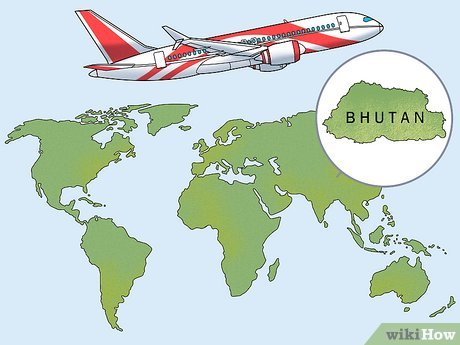
2Fly directly into Bhutan. There is only one international airport in the country. It is in a city called Paro, which is one hour away from Thimphu, the capital of Bhutan. Only three airlines, Drukair, Bhutan Airlines and Buddha Air, fly into Bhutan. Buddha Air only does charter flights. Flights to Bhutan depart from Nepal, India, Bangladesh, Singapore, and Thailand year-round as well as from Malaysia and Indonesia during peak tourism months.XDrukair offers flights from places like Dhaka, Bangladesh; Delhi, India; Kathmandu, Nepal and Bangkok, Thailand.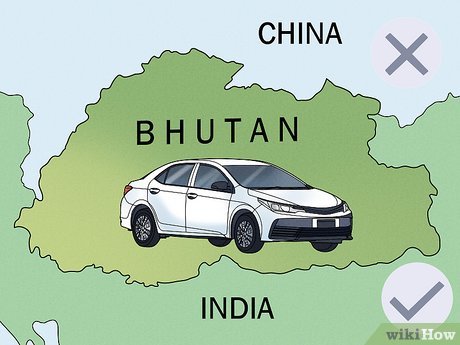
3Enter Bhutan by land. This is only possible by going through India, meaning you’ll have to take a flight to India and then cross into Bhutan. You cannot enter Bhutan by land through Tibet or China. There are three land border areas open to tourists: Phuentsholing, Gelephu, and Samdrup Jongkhar.XPhuentsholing is a little more than 100 miles from Bagdogra, India, where there is an international airport. Once you arrive at Phuentsholing, it takes about six hours to get to Thimpu.Gelephu and Samdrup Jongkhar are somewhat close to the Indian state Assam. The capital of Assam is Guwahati, which has an international airport. Guwahati is about 140 miles from Gelephu and less than 100 miles from Samdrup Jongkhar. If you are travelling through Guwahati, try to cross the border at Samdrup Jongkhar, as it is about a three-hour drive.You can get to Bhutan from India by bus or private car. There is no direct train route to Bhutan from India.
4Buy a local SIM card if you need to stay connected. Bhutan’s mobile network service is hit-or-miss, and most cell phone providers don’t allow roaming there. Check with your phone company to verify their policy. The best way to stay connected is by purchasing a SIM card at an electronics stores in Bhutan. The card costs about 9 dollars. Half of the price is for calling and texting, while the other half gets you around 2GB of 3G data.XYou can pay for more calls, text, and data as needed.Many of the hotels have Wifi, but it isn’t as reliable as in other parts of the world.Part 3Part 3 of 3:Exploring Different Parts of Bhutan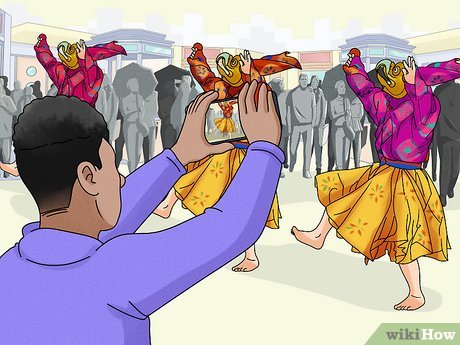
1Experience a Bhutanese festival. The biggest festivals, like the Paro and Thimpu Tschechu, happen during the tourist season and feature elaborate dances and colorful costumes. Lesser known festivals, such as the Haa Summer Festival, provide a more intimate experience and better photo-taking opportunities. Your tour guide will know everything about the festivals going on while you are in Bhutan, so be sure to consult with them.XTshechu is another name for festival. Part of the reason the Paro and Thimpu festivals are so popular is because they happen in Western Bhutan, about one hour from the airport.The Paro festival lasts for four days at the end of March, while the one in Thimpu goes from September 19-21.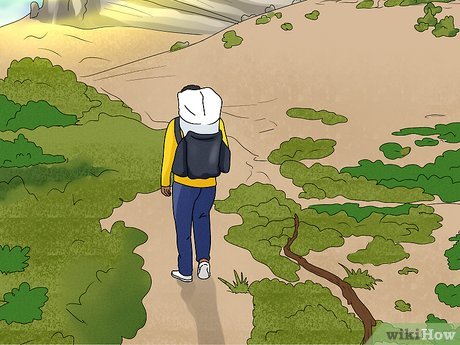
2Trek all over Bhutan. As long as you are with your tour guide, you can go anywhere in the country. Your tour company will suggest popular places to visit, but you can also choose a personalized adventure. Make sure to carefully plan your trip ahead of time, as some places require zone travel permits.XYou can change your plans during the trip but avoid doing this last-minute. Otherwise, you’ll pay hotel cancellation fees or incur other charges.It is possible to extend your trip if your visa allows it or if you get an extension on your visa. Ask your tour guide how you can do this!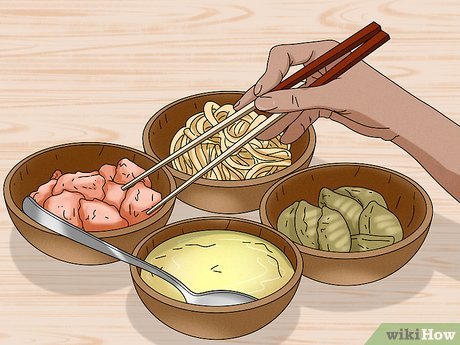
3Sample the local food. If you like spicy food, Bhutan is the perfect destination for you! Your guide will ask you about dietary restrictions on the first day of the trip, so if you do not like spicy food or have any allergies, tell them as soon as you can. Bhutan’s national dish is called ema datse, which is a spicy curry that mixes chilies with farmer’s cheese and is served with nutty red rice. The meal is topped off ezay salsa, which is made from dried chilies.Bhutanese people eat chilies at every time of day, so you will have to keep reminding your tour guide if you do not enjoy spicy food.Most meals will be served buffet-style, meaning many of the dishes will be cooked with at least some spice to it. Sometimes, however, you can order a batch of non-spicy food if you ask well in advance.
4Practice shooting arrows in an archery field. Archery, known as the Dha in Bhutan, is the country’s national sport. Ask your tour guide to plan a time to go to an archery field, as it’s an activity that visitors are encouraged to try out.XMost towns have an archery field, so finding a place to practice shouldn’t be hard at all!You can also attend a local match and watch some of the world’s best archers compete against each other.








